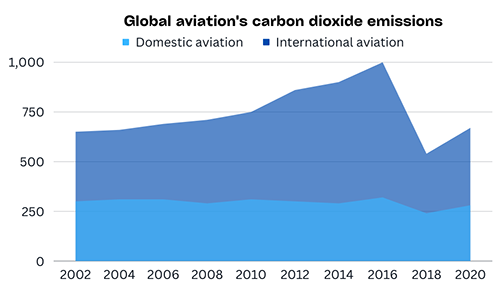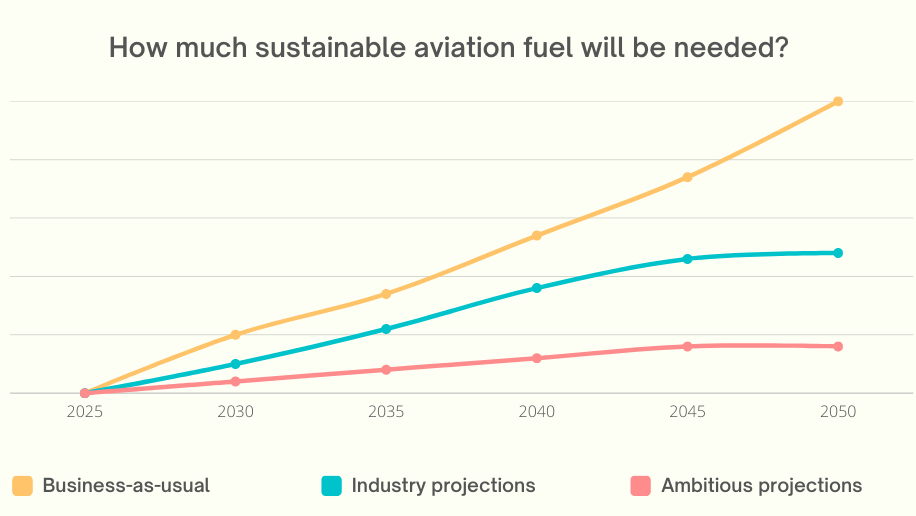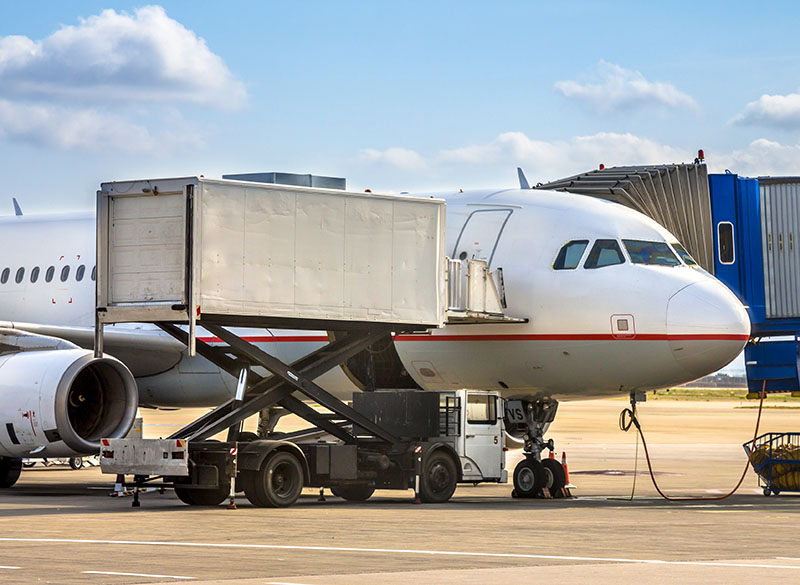Airlines have pledged to achieve net-zero carbon emissions by 2050 in an effort to combat climate change. To achieve this, the use of sustainable aviation fuels needs to increase, but that won’t be enough, according to recent research. Sustainable aviation fuels like biofuels made from agriculture residue, trees, corn, or used cooking oil and synthetic fuels made from captured carbon and green hydrogen, can be used in existing aircraft. United Airlines has announced a partnership to power 50,000 flights annually between Chicago and Denver with ethanol-based biofuels by 2028. This comes at a time when California is implementing a bold new climate action plan with the goal of eliminating the state’s greenhouse gas emissions by 2045.
The Need for a Comprehensive Approach Including Sustainable Fuels and Direct Air Capture and Storage
A study on reaching net-zero emissions in aviation found that replacing fossil fuels with sustainable aviation fuels is crucial, but the industry will still need to invest in direct air carbon capture and storage to offset emissions. In 2019, aviation accounted for 3.1% of total global CO2 emissions, and passenger miles traveled were increasing. Aviation emissions would rank sixth among emitters if they were a country, just behind Japan. Sustainability fuels may reduce CO2 emissions, but they still produce soot and contrails that contribute to warming.
An Analysis of Nine Scenarios towards Net-Zero Emissions by 2050
The aviation sector is one of the most challenging to decarbonize. Despite the development of small electric and hydrogen-powered planes, long-haul flights with a high passenger capacity are still far in the future. To examine the industry’s potential to reach net-zero emissions by 2050, nine scenarios were developed and analyzed, including various projections for passenger and freight demand, energy intensity, and carbon intensity.

Our findings showed that the aviation sector would need 19.8 exajoules of sustainable aviation fuels to reach net-zero CO2 emissions, which could be reduced to as low as 3 exajoules with other efficiency improvements. In comparison, all biofuels produced in 2019 amounted to roughly 3 exajoules and surpasses the 0.005 exajoules of bio-based jet fuel produced in 2019. To reduce the amount of fuel required, reducing air travel and improving airplane energy efficiency, such as using more efficient glide landings, can help. Even in the best-case scenarios, where demand grows at 1% annually instead of 4% and energy efficiency improves by 4% annually instead of 1%, aviation would still need about 3 exajoules of sustainable aviation fuels.
Challenges in Biofuel Production for Sustainable Aviation Fuels: Land Requirements and Cost Considerations
Expanding biofuel production for sustainable aviation fuels faces significant challenges. It may require up to 300 million hectares of land, equivalent to 19% of global cropland, to grow crops for fuel production. Furthermore, biofuels tend to be more expensive than fossil jet fuel, which has a global average price of $0.80 per liter. The cost of producing bio-based jet fuels can range from $0.78 to $8.67 per gallon, with HEFA (using fats, oils, and greases) at the lower end and synthetic fuels at the higher end. The cost can vary based on the availability of waste oil for HEFA, and the process of producing Fischer-Tropsch biofuels through chemical reactions can also impact the cost.

Reaching net-zero CO2 emissions in aviation is a challenging task that may require carbon removal methods. Our study found that if airline usage remains at current levels, up to 3.4 gigatons of carbon dioxide will need to be captured and stored to reach net-zero emissions, which could cost trillions of dollars. The carbon removal process must follow strict eligibility criteria and be permanent for it to be effective. Currently, most airlines are participating in offset programs that purchase cheap, non-permanent offsets, such as forest conservation projects. It’s important to note that our findings have some limitations.
We assumed that sustainable aviation fuels have no life-cycle emissions, but the production of these fuels includes emissions from fertilizer, farming, and transportation. Additionally, the American Society for Testing Materials has a maximum blend limit of 50% for sustainable fuels in conventional jet fuel, although some airlines in Europe have tested 100% blends.





